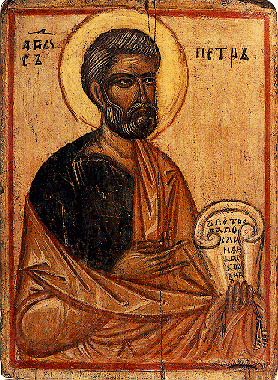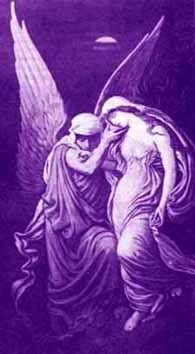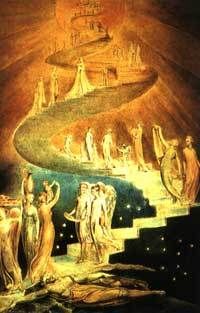Continuous Revelation
Our Experience of Scripture
Copyright © 2005 * Church of the Pearl * thepearl.org
We frequently receive questions about the scripture texts we offer on our web site. People (including me) have asked, “Where do these writings come from? Who has published them? Can I buy them in a bookstore? How do they relate to the gnostic scriptures I am already familiar with from the Nag Hammadi library, the Bruce codex, or the Askew codex?” On occasion, someone will read the material on the web site and find a quotation from a source that is unfamiliar, for example, Teachings of the Master, or Book of Covenants. Unlike the many Pearl scriptures featured on our web site, these two writings are not published there; when people request a copy of the complete text, they are told (for reasons that will be discussed) that it is unavailable. This short article is an attempt to answer the questions posed in this paragraph. To begin, we will discuss our view of revelation and how it differs from an orthodox view.
What Is Revelation?
Most of us who were raised in an orthodox Christian religion have been taught that revelation is obtainable through two or three primary sources: (1) scripture; (2) sacraments; and (3) church hierarchy. In an orthodox setting, if a person has an experience of divine reality, for that experience to be considered revelation, the content of the message must agree with all prior revelations already approved by the church elders. Usually these prior, approved revelations are published in the Bible, and in the case of Roman Catholics, in the official pronouncements of the Pope and bishops around the world, or in the writings of canonized saints.
Unfortunately for the contemporary Catholic, in 1545 the Council of Trent declared the approved books of the Bible to be closed. No further revelations could be added to the “canon.” Not even the Protestants have challenged this rule, except to say that they do not recognize several texts from the Hebrew scriptures(1) that the Catholics did include in their approved books of the Bible. It is interesting to observe that orthodox Christians disagree among themselves as to what books should be considered revelation. It is further intriguing that their disagreement is about which books should be left out, as opposed to which new books should be let in!
How do gnostics differ from this approach to revelation? First, gnostics do not attempt to turn revelation into a rule or a way to measure which kind of insight is acceptable or not. Gnostics experience the presence of the divine reality in various ways ranging from the mundane events of their daily lives to profound states of consciousness during their meditations and reflections. Sometimes the experience of the Divine challenges one’s assumptions or current beliefs. The person may become aware of new (to oneself) thoughts, insights, or principles. Further, the new awareness may trigger an emotional reaction that lends a sense of importance to the event.
In some cases, the gnostic may receive in his or her mind a picture or a story or a message that seems important to write down. The message might include words and actions of well-known figures such as Jesus, Moses, Abraham, etc. who personify archetypes(2) within us. In other cases, the gnostic may receive an awareness that translates previously published writings in a manner that opens up the deeper meanings of the text. These kinds of experiences can serve as examples of the continuous work of the Spirit to open our minds to greater and greater awareness of reality.
The gnostic does not compare the more recent revelation to prior revelations in the Bible because a revelation from the divine Mind is always current no matter when the human being received the revelation. We do not make the assumption that because a text is a few thousand years old, it must be closer to Truth. Rather, we assume that the Spirit worked in the lives of people then and continues to work in our lives now. We can go through the exact same process of receiving revelation that the ancient gnostics did. There is no need to make the comparisons such as “more authentic” or “less inspired,” etc.
When a revelation involves the figures we are familiar with from Bible stories, we do not assume that the revelation must be analyzed as a historical narrative of past events. Instead, we take the view that the Bible figures personify archetypes that live within us and speak to us just as they lived within the people of the past and spoke to them. A revelation that is given today about the sayings of Jesus is a revelation from the living archetype of the Christ that lives within our psyches. It is not a series of quotations spoken by the man, Jesus of Nazareth, a few thousand years ago.
The quality that particularly characterizes the gnostic experience of revelation is that the revelation is accepted as an archetypal experience of the divine that is meant to provide insight and inspiration for the soul’s journey. If the numinous experience of revelation is later reduced to a written text, and that written text provides others with insight and inspiration for their work of individuation(3), then that text can be considered a worthy scriptural revelation for the community. If the text does not resonate among the members of the group, it can be accepted as a personal revelation that remains meaningful and helpful to the one who received it.
Unlike orthodox believers, the gnostic is not overly attached to the idea of a “perfect” revelation that agrees with all past revelations, or a “perfect” translation that literally moves the ancient language into modern English. The focus among gnostics has more to do with the enhancing of the soul’s journey, the furthering of the experience of the divine in other people. Because the experience of the divine is so often a right-brained phenomenon, the literal focus on words, or the strict matching of present with past revelation, is often a distraction from the centrality of gnosis as an experience, rather than a concept.
Does this mean that gnostics lack a central tradition that guides our approach to the divine? Certainly not! We have a robust tradition, built on many years of living experience that continues to shape and guide us as we seek revelation. There is a definite coherence to our tradition. We are not scattered in our thinking or practices. Although we open ourselves to the continuous revelation of the divine, this does not mean that just any psychic experience, including grandiose or paranoid fantasies, becomes equivalent to the Spirit’s revelation among us. Why not? The two key answers have to do with discernment and trust.
Discernment is a gift of the Spirit. It is the ability to interpret the meaning of one’s experience, including sometimes baffling psychic or spiritual experiences straight out of the collective unconscious. The Spirit works in the community to help people to relate to the revelation and to interpret it in depth so that its message furthers the soul’s journey and provides insight and inspiration for the individuation work. If the interpretation of the revelation resonates with the community, it will do so because it is providing needed assistance in the gnostic pursuit of wholeness.
The other key answer to why continuous revelation enhances our living gnostic tradition is that we trust the presence and work of the Spirit among us and we trust that the revelation experiences that we have are always—when interpreted in depth—helpful to knowing ourselves and thus knowing the divine. We understand that if we are being given an experience to live with, to relate to, to discern, then that experience will in some way prove helpful to us as we seek to fulfill our primary reason for being on earth.
The principle of trust is very important to appreciate as we ponder the meaning of revelation. We can trust that the Spirit does not lead us astray, causing us to adopt merely self-serving philosophies that rationalize egocentric choices. But surely, you say, many people have fallen into that exact trap and made horrific choices in the name of their god. In the name of Jesus Christ, popes have authorized Crusades and Inquisitions, causing the murders of countless women, men, and children. Ministers have led their followers to drink poisoned Kool Aid and commit mass suicide. How can we discern the voice of the Spirit from the voice of the archons and demiurge(4)? The answer lies in discovering and meditating on the principles of divine Mind that are revealed in myth.
Principles Embedded in Myth
What is myth?
A myth might be defined as a story that illuminates some important principle, or principles, concerning mortal existence. In this sense, a myth is always true because it reveals some aspect of Truth. This concept of myth is not affected by whether the incidents or conditions described in the story ever actually existed on a time line. The important thing is that they do exist in the Reality we must master to enhance our mortal existence.
A myth may demonstrate one principle at one time, and something quite different in the context of another time. In both cases, the myth would be true because it speaks to the people of that time, unveiling for them some aspect of Divine Truth or Ultimate Reality.
In the Pearl community, we don’t approach the scriptures by trying to fit meanings to them. Instead, we use the techniques of meditation to get into the scripture and experience its reality, the situation that caused this story to be included in the sacred books, and how that situation applies to us today. This is approaching scripture as myth.
To discover the meaning hidden in the myths of scripture, we must approach them as we would an icon. When we look at an icon, we may appreciate it as a work of art. We may critically analyze it, consider to what school it belongs, consider techniques the artist used. We may examine its history, consider when it was produced, and research what others have said about it. While all these avenues of consideration may provide useful background for our exploration of the icon, by themselves they cannot bring us to the point where we can discern the value of the icon in our search for Truth. Only by approaching the icon metaphysically, applying the techniques we learn in meditation, do we learn the secrets the icon holds for us.
In the same way, when you approach the scriptures, approach them as a basis for meditation. It may be valuable to read commentaries and examine their historical context, but the secrets of the scriptures will remain hidden from you until you get beyond the words to view the Reality which their stories are unfolding. Instead of trying to find a “correct” interpretation, allow yourself to let the timeless archetypes speak through the words. For example, you can attempt to discern the experience the writer may have had that would prompt this writing to emerge. What was the writer moved to communicate? If you read a saying of Jesus, ask what was a likely question or situation that drew out his response. Don’t worry about whether it happened exactly that way in the past, because what is important is what is happening within you now. Ask yourself why this scripture was considered valuable enough to be included in the canon of scripture. Then probe your own feelings and thoughts that spring up from your reading. When you meditate on these things, you will begin to perceive the underlying principles of Truth that are embedded in the myth.
This takes us back to our question about trusting the continuous revelations of the Spirit. It is clear from our experience that the Spirit continues to consistently reveal images, ideas, stories, perceptions, and insights that flow harmoniously with all the revelations already received by our predecessors. Each contemporary revelation is like a new chapter being added to a beautifully written and cohesive story. The plot line is developed intelligently and the characters grow gradually. Surprising things happen, but all together the revelations fit into each other and into the whole motif of the gnostic myth of salvation. As we do our part and meditate in depth, new revelations may be added to our understanding, but always those new revelations enhance the living Word and open our minds to new ways of thinking.
Invitation To Explore More:
As you read through the scriptures on the web site,
THE PEARL---> http://www.thepearl.org you may resonate with the images, ideas, and invitations. You may feel the presence of the Spirit moving you to take another step in your individuation journey. If this is your experience, we suggest you trust it and find a way to make room in your life for taking that next step. This is our intent in providing these revelations and translations that have come to our community.
The Spirit works in so many ways and reaches out to so many people of diverse backgrounds; the gnostic approach to revelation opens up to this diversity in the Spirit’s work. Revelation can come through anyone of any culture, age, gender, or belief system. Our gnostic tradition provides us, as it were, with a strong receiver that picks up signals from all over the world. We rejoice in all the revelations that others have received, but we particularly recognize the power of the revelations we have received, and we want to share them with you. Our scripture texts provided on this web site represent our experience of opening up to the Spirit, receiving a revelation, and then reflecting deeply on that experience until we were able to write down in words what originally came in flashes of insight. After a written text was developed, we sat with it, reflected on it, and discerned its power to assist us in our individuation work. Now, we continue to read, reflect, and meditate on these scriptures, which continue to unfold more and more depth through their message. All this is the continuous work of the divine among us, the continuous revelation of the Spirit that shapes us and leads us to become our true divine selves. It is this grand vision of Reality that we invite you to share with us.
1 These texts are Baruch, Sirach, Tobit, Wisdom of Solomon, 1 Esdras, Judith, and 1-4 Maccabees.
2 Archetypes are pre-formed patterns and themes within the human psyche that have their own intentions apart from what the conscious ego may intend. The figure of Jesus, for example, has to do with the power of redemption and salvation that lies within, but remains untapped until we begin a conscious relationship with it by undergoing an initiation known as immersion. In a revelation experience, the archetype of redemption is likely to be personified as Jesus.
3 Individuation is a word coined by C.G. Jung to refer to the process of becoming a whole, unified human being. This is a process because it gradually unfolds and, if we are doing the work of individuation, we are always moving toward greater and greater integration of our spirit, soul, and body. Gnostics recognize (as did Jung) that the human psyche is a chaotic blend of opposing forces that are mutually antagonistic toward each other, and until a person undertakes the difficult work of individuation, the inner forces will interfere with the person’s freedom to be fully human. Individuation implies that the person has consciously related to these opposing forces within and is finding a way to make room for them all in a harmonious, unified relationship among the powers of the conscious, unconscious, and hyper-conscious aspects of the psyche.
4 The demiurge is a personification of the archetype in us that has to do with making God in our own egocentric image. Human beings without gnosis tend to project their own prejudices and assumptions on to the divine being, making the divine out to be angry or jealous or having favorites or being worried about the sexual behaviors of mortal beings. Gnostics recognize this archetype as a false god even though much of orthodox literature represents this archetype as the “one, true God.” The archons are deputies of the demiurge, and they work to keep humans trapped in this illusion of being separate, mortal creatures.










No comments:
Post a Comment